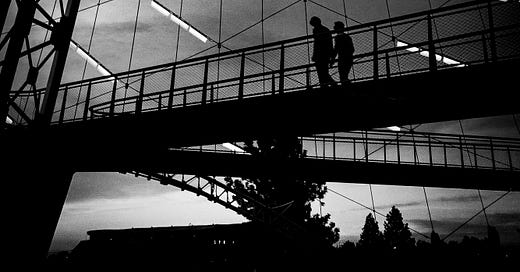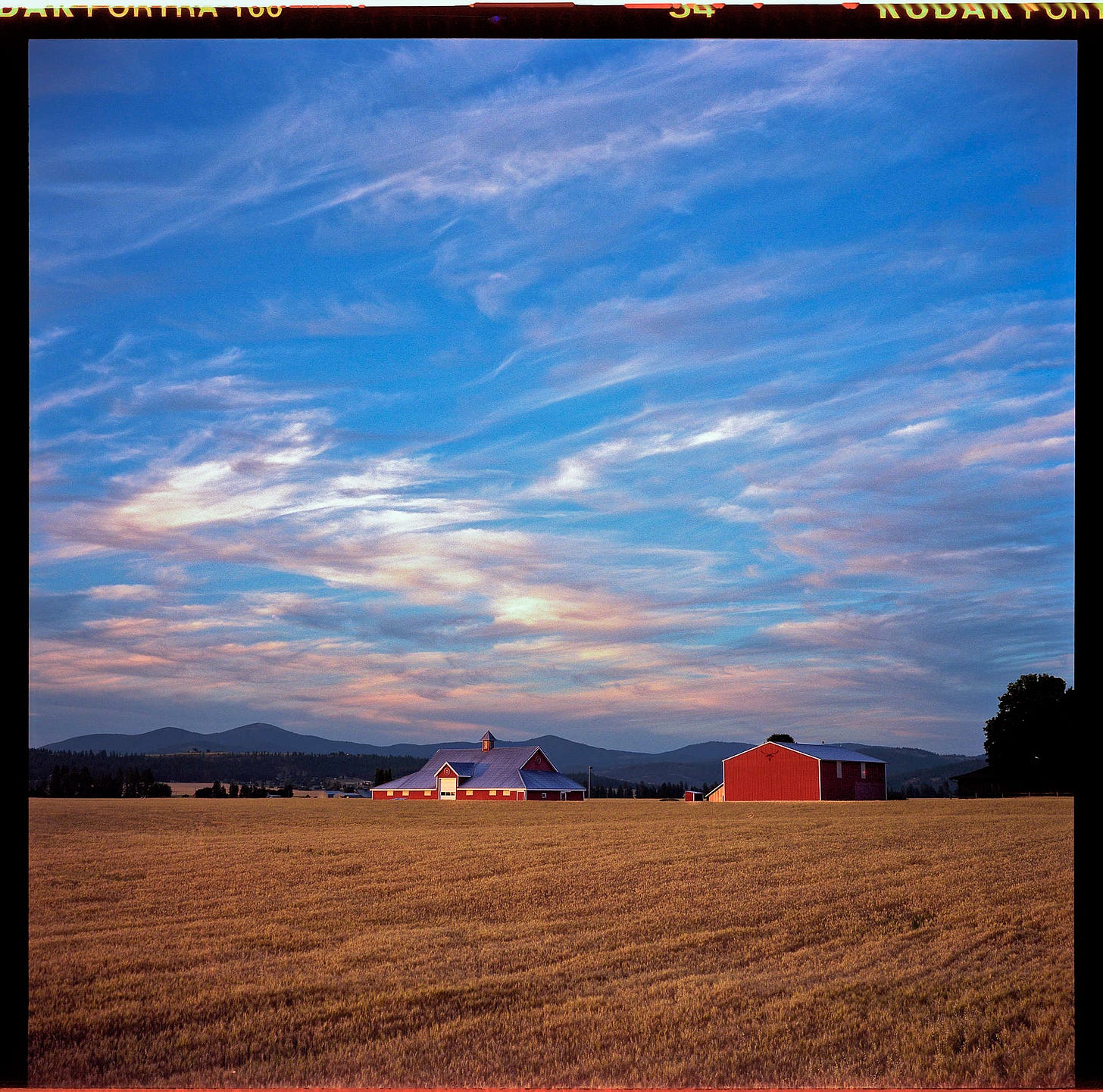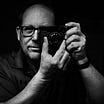Today I will present Paul Votava the author of Finding Focus. Paul is a photographer that uses both digital and analogue mediums.
1. Why photography?
Photography has been part of my life for as long as I can remember.. My father was an entrepreneur and in the early 1950s, he ran and then purchased a local Black and White lab. He added color photo finishing and grew into a thriving tri-state business. All of us kids are well documented from an early age (I came along in the 60’s). Later I worked there, I learned all aspects of film and print developing, mostly automated by then. I learned color theory and honed my eye correcting exposure on thousands of rolls of negatives on Kodak 5S printers—an invaluable foundation.
After overseas service, my father’s entrepreneurial spirit rubbed off on me and I established my own successful lab and studio in Spain for 15 years, starting in the local economy and then adding a location on the naval base. The studio specialized in portraits including event, school and sports photography, including printing and packaging, But the advent of digital led to diminishing returns in photo finishing and the increase in non-stop studio expansion eventually led to burnout. I sold the business, headed stateside, and pursued a different career, thinking of stability providing for my family and retirement.
After an injury in the service came back to haunt me, I experienced a difficult period, grappling with chronic pain and limited mobility. Then I went through a failed back surgery, I was on heavy pain meds and depressed for years, which destroyed my social life. After several more surgeries and gradual improvement, I rediscovered photography. Sifting through old photos, and reading books, I found solace and inspiration. I started up again and it became my therapy, a powerful way to re-engage with the world. I realized my burnout wasn't from photography itself, but from being overly ambitious. Now, I capture what I want, on my own terms. I like what Henri Cartier-Bresson said: "To photograph is to hold one's breath, when all faculties converge in a face of fleeing reality. It is at that moment that mastering an image becomes a great physical and intellectual joy.”
That joy became my lifeline. This therapeutic journey continues; I'm three months away from being completely off opioids after 13 years, living and interpreting the world through my analog and digital photography. I still have a day job that pays for it all and provides for the family, with an eye on doing more traveling after retirement.
2. What is your favourite gear? (camera, lens)
My absolute favorite analog gear is a Mamiya 6 with the 75mm lens. It produces spectacular square-format images in a remarkably portable medium format design. There's a precision to the Mamiya that encourages a deliberate 'making' of an image.
On the digital front, I started with Nikon during my business years, and the last I bought was a l hybrid Fujifilm/Nikon digital SLR, it was a beast. However, for my current personal work, I've transitioned to the Micro Four Thirds (M4/3) system. This shift was driven by a desire for portability—I no longer want to lug around heavy gear. The M4/3 system offers a fantastic balance of economy, compact size, and excellent lens options, especially for telephoto reach and macro work. My current setup is a Panasonic G9, G9M2, and GX-9 with several prime and zoom lenses, but the Panasonic Leica 12-60mm f/2.8 (24-120mm full-frame equivalent) gets the most use for its versatility and optical quality.
3. What are your favourite subjects to photograph?
I'm a generalist and love to explore diverse genres and new techniques. My approach to street and urban photography has evolved; I now actively incorporate people, experimenting with layering to add dynamic interest. I'm fascinated by patterns of light and shadow, often using black and white for architectural abstracts, while people-centric shots tend to tell a story. Recently, I've developed a keen interest in macro photography, especially flowers. The closer you get, the more intricate patterns emerge—they're truly a miracle of geometric form. Rural photography is also important to me; I enjoy documenting local towns, hoping these images have a documentary value. Portraiture is always a joy on my terms. It's a collaborative process, fostering communication beyond words. I've done a few projects and anticipate more once I retire, with new ideas often emerging from my existing archives.
4. Can you name a few of your favourite photographers?
I draw inspiration from a wide range of photographers, both contemporary and “legendary”. Among my contemporary favorites are:
Portraits:
, Bill Wadman, Nadav Kander, and — each uniquely capturing the human spirit.Urban Landscapes/Street/Architecture: Todd Hido, Stephen Shore, Alex Webb, William Eggleston, Andrew Prokos, and Daidō Moriyama—exploring the dynamic interplay of urban environments.
Natural Landscapes: Mahendra Bakle, Hengki Koentjoro, Alex Noriega, Cole Thompson and
— reminding me of nature's profound beauty.And of course, my legendary heroes—the giants who I am sure have influenced my peers as well—include Garry Winogrand, Saul Leiter, Diane Arbus, Edward Weston, Man Ray, Dorothea Lange, Richard Avedon, André Kertész, Robert Adams, Henri Cartier-Bresson, and Harry Callahan, to name just a few. I have collected several photo books featuring them and viewing their work continues to shape my understanding of photography.
5. What can Substack community expect from you/your publication in the future?
I love the format and community here and the freedom to photograph and post on my own schedule. If it seems more like work, it saps the creative energy out of the process. I have tried a new feature, Street Stories, which I have had some great feedback on, so I will continue with that, and I have some other ideas for urban architecture, rural reels, some shorter themed posts, and digging out the film archives from when I was overseas and start sharing those as well. My main goal here is to have fun, be involved with the photography community and provide some value to subscribers. I have another channel but I confess I have not touched it for a long time, it is called @film2photo, featuring film cameras from my collection. I may add to that or possibly combine that into my main page, I know there are plenty of film fans out there, and like me, shoot both analog and digital. It’s just that two publications require more time than I anticipated.
Ultimately, I believe in a collaborative approach. I encourage feedback and comments that will significantly guide the future direction of this publication. I'm eager to connect and build something truly engaging together. Thank you for this opportunity to share my story!










@perfectlight it has been a real pleasure working with you on this and the collaboration. This space definitely brings much value to our community, I enjoy reading it weekly to learn about our peers. Thanks for the invite!
I've appreciated our communications, Paul, and am grateful for this deeper look into your past and your art. We are but an interstate away from one another, hopefully our paths will soon merge. Nice work here!